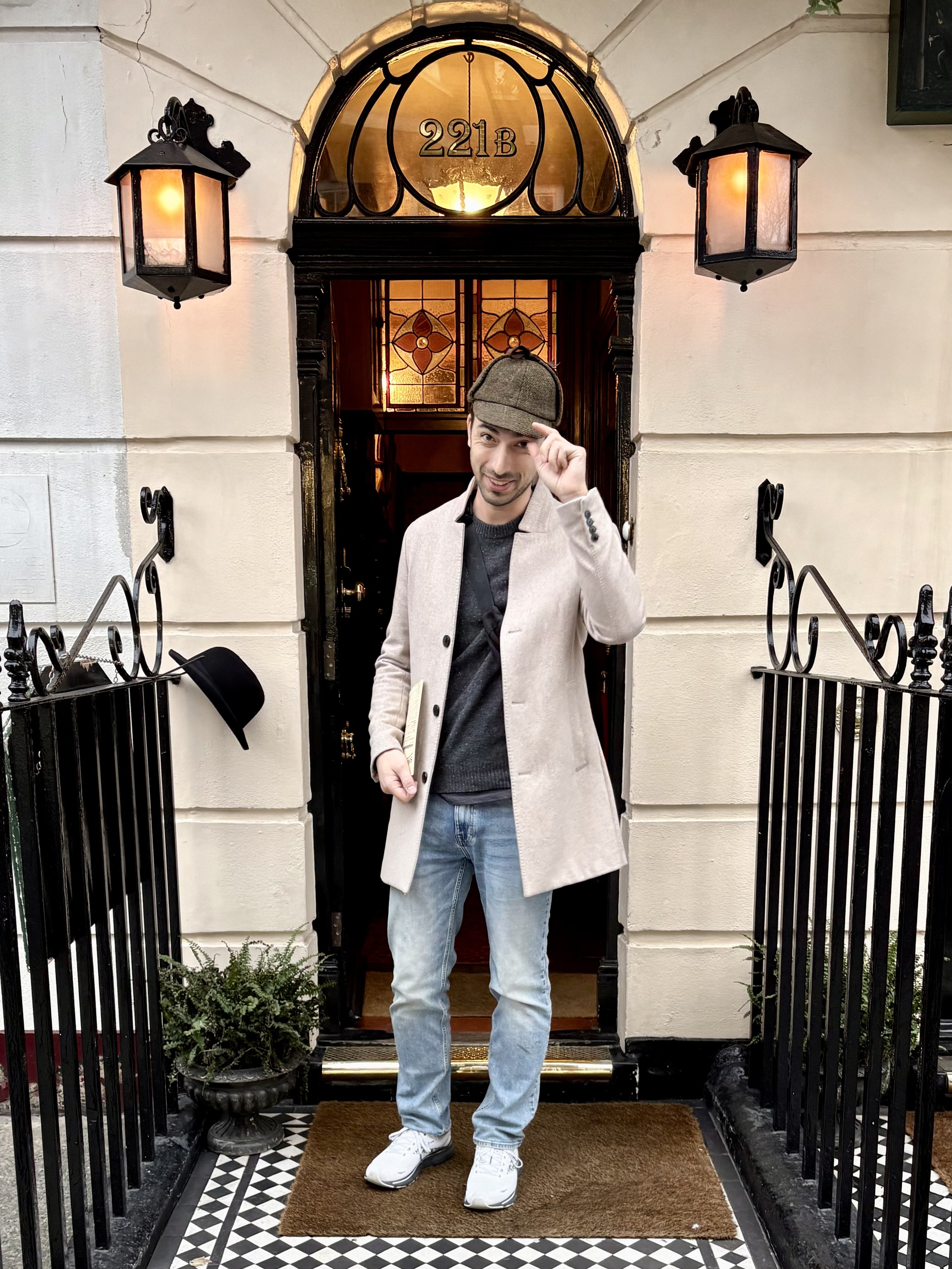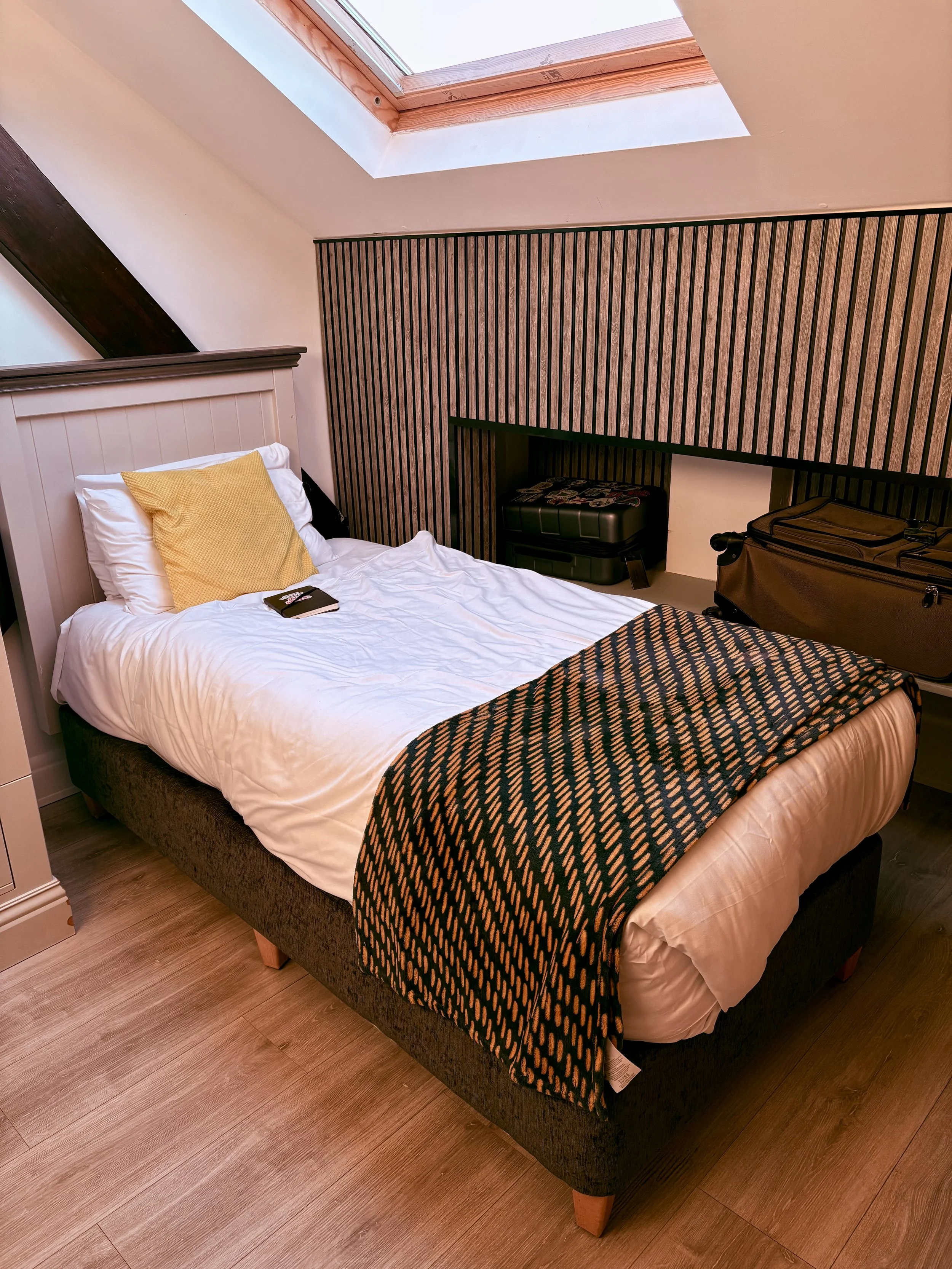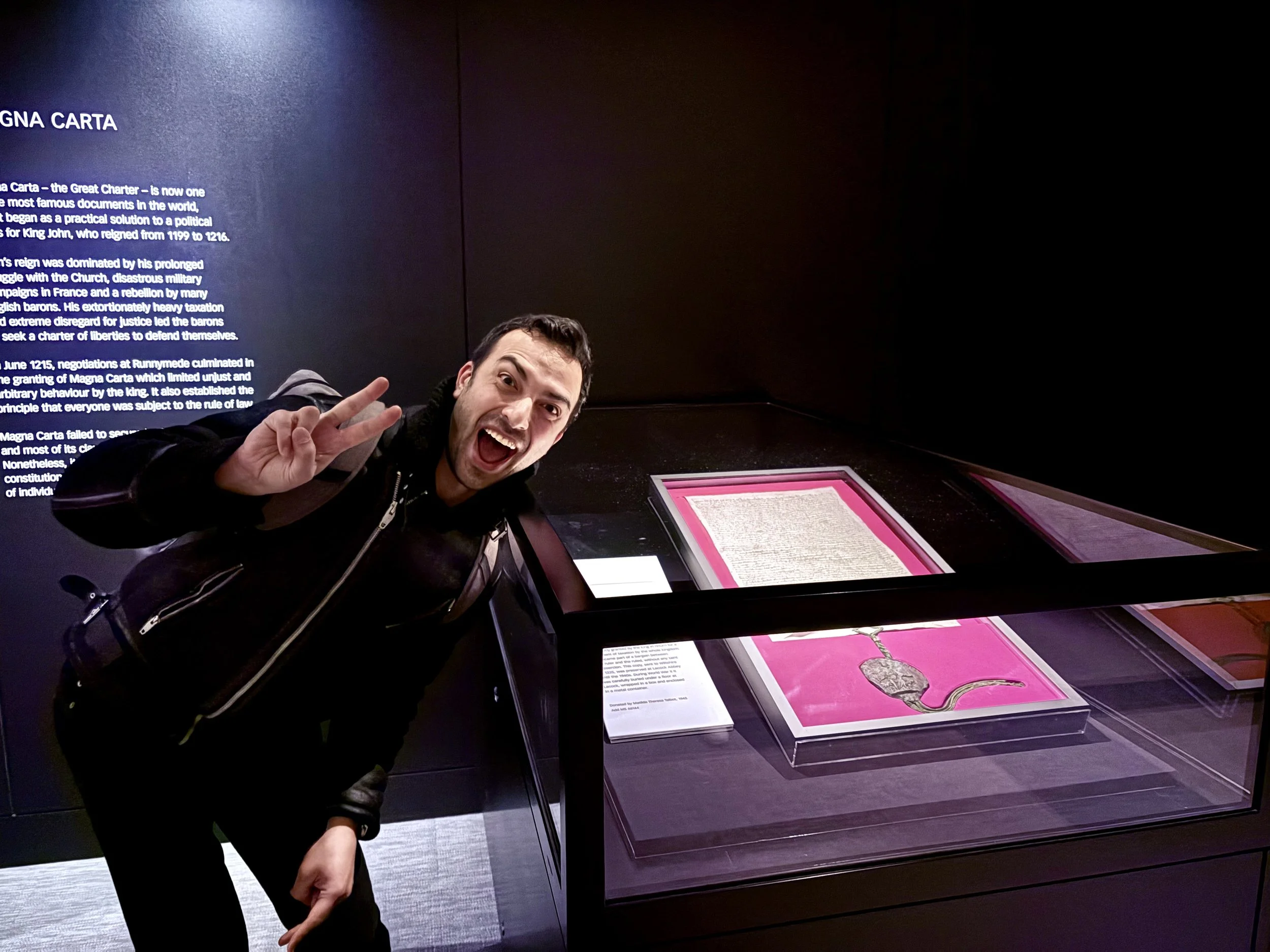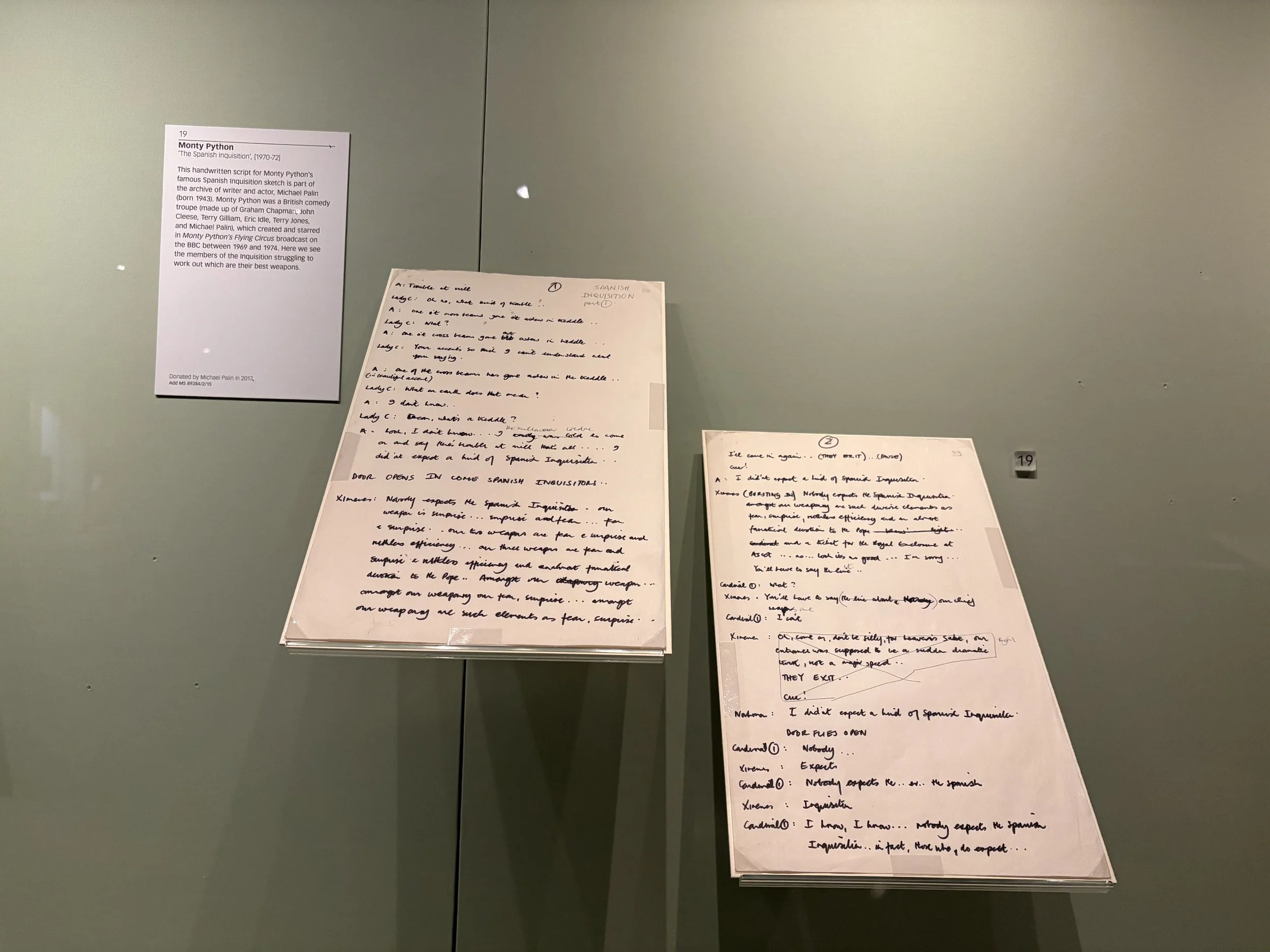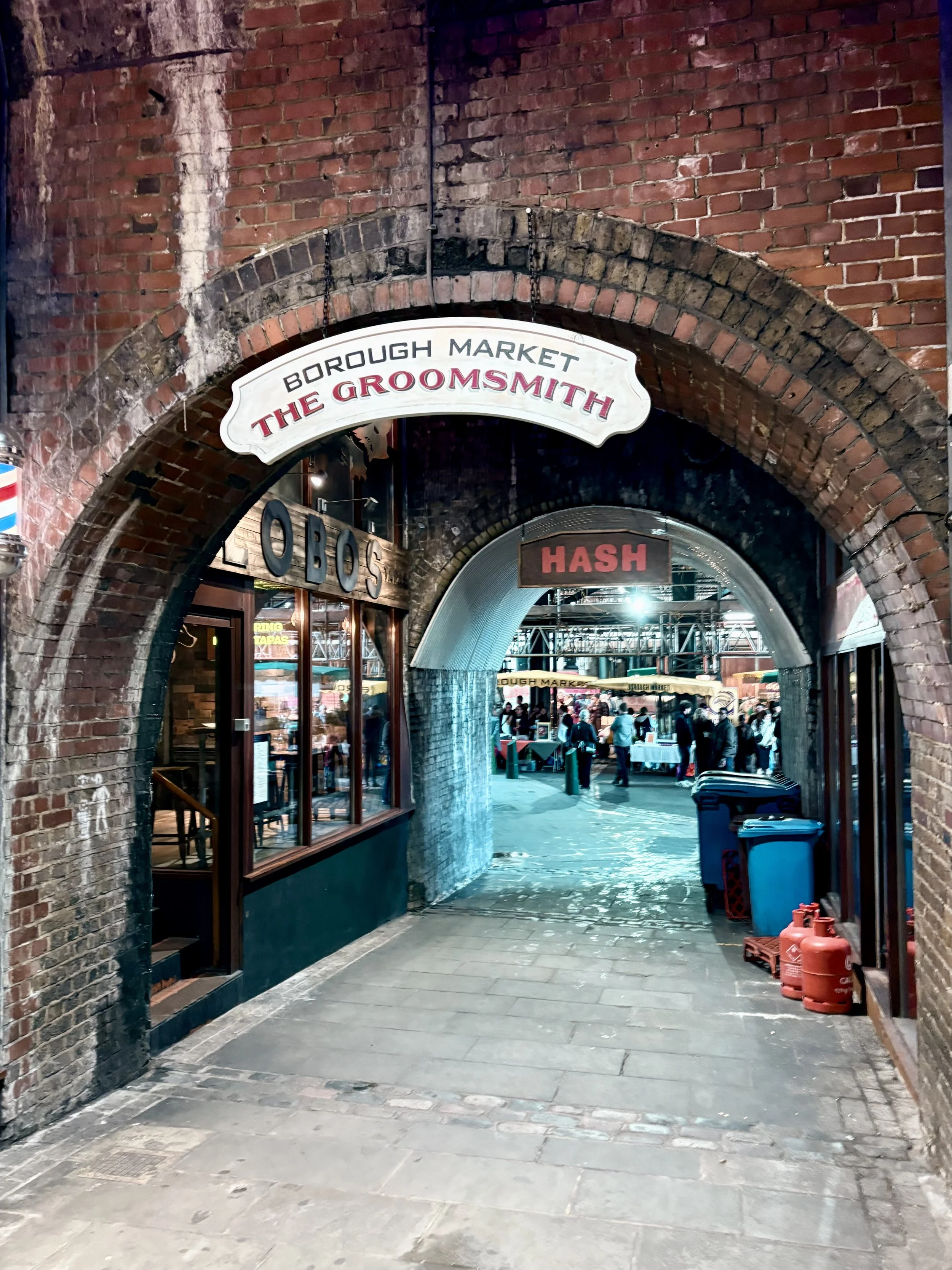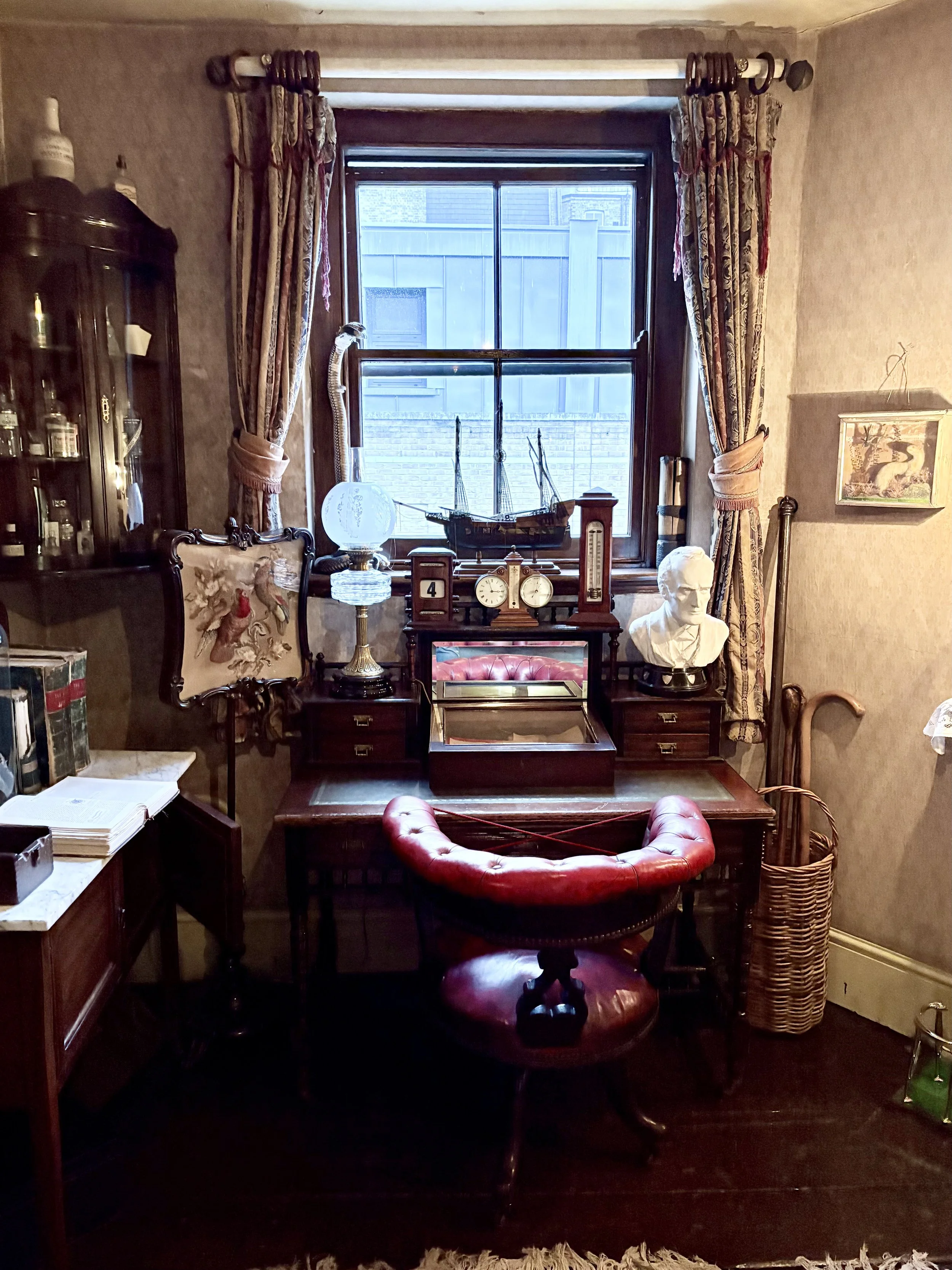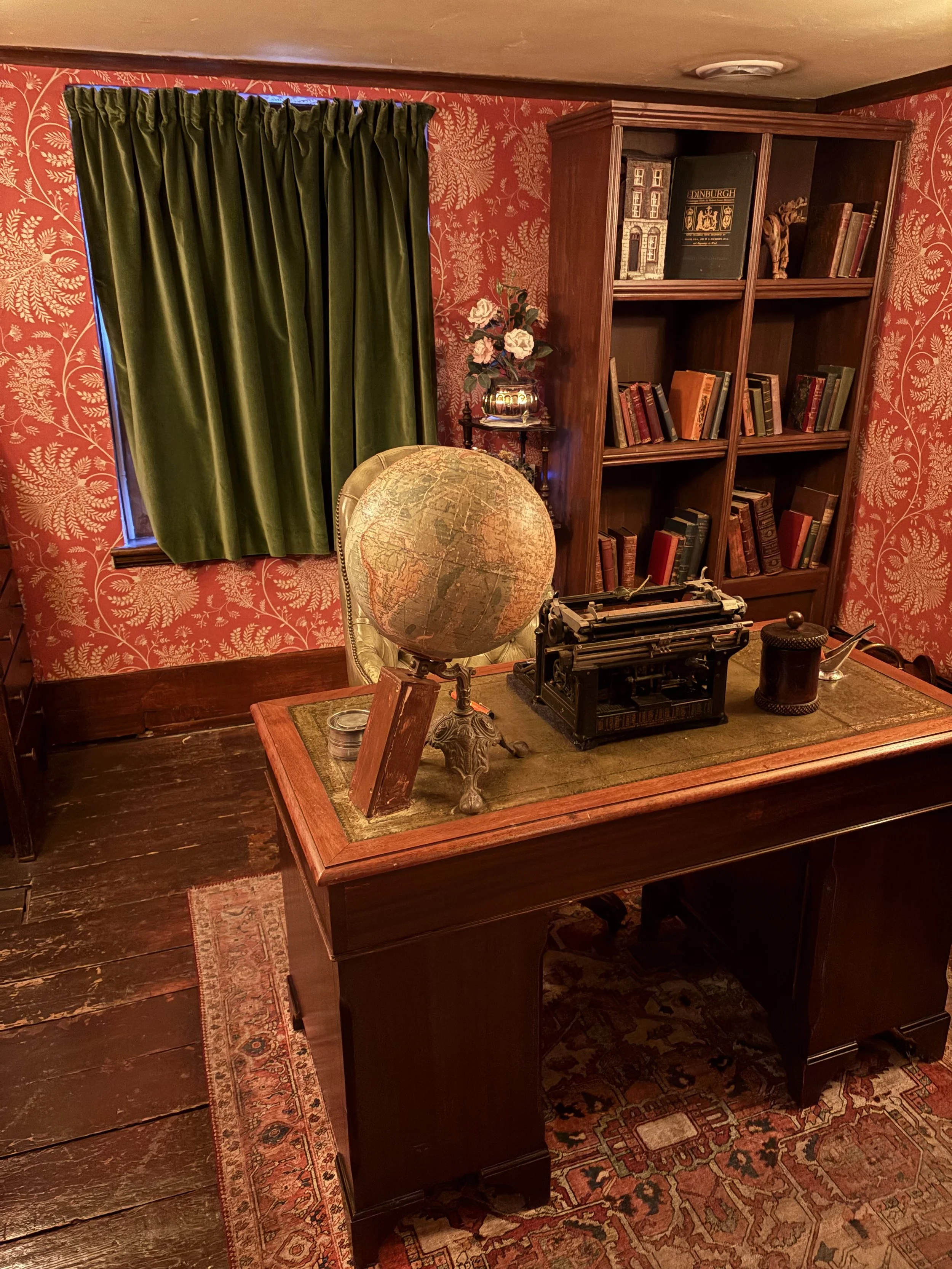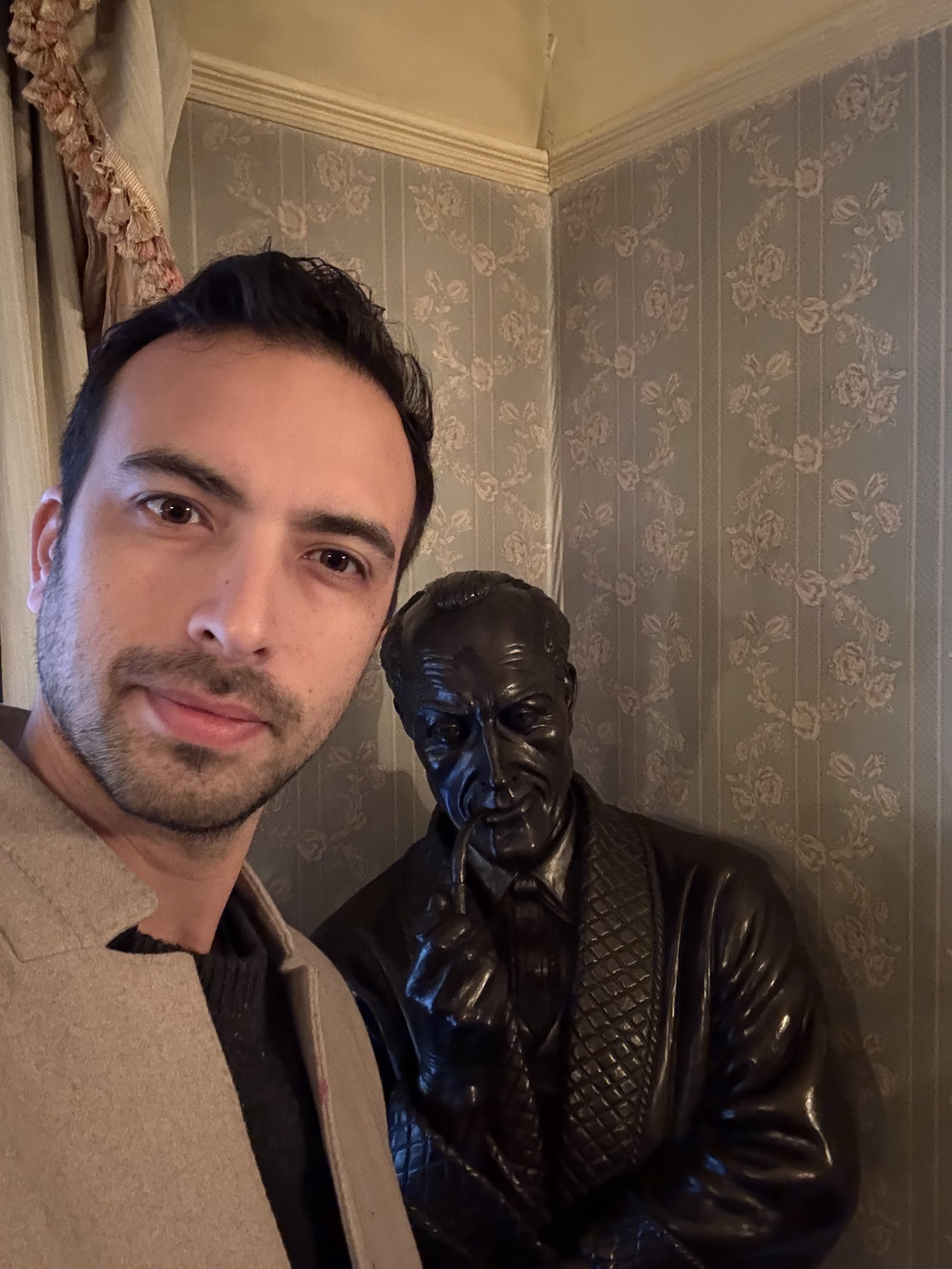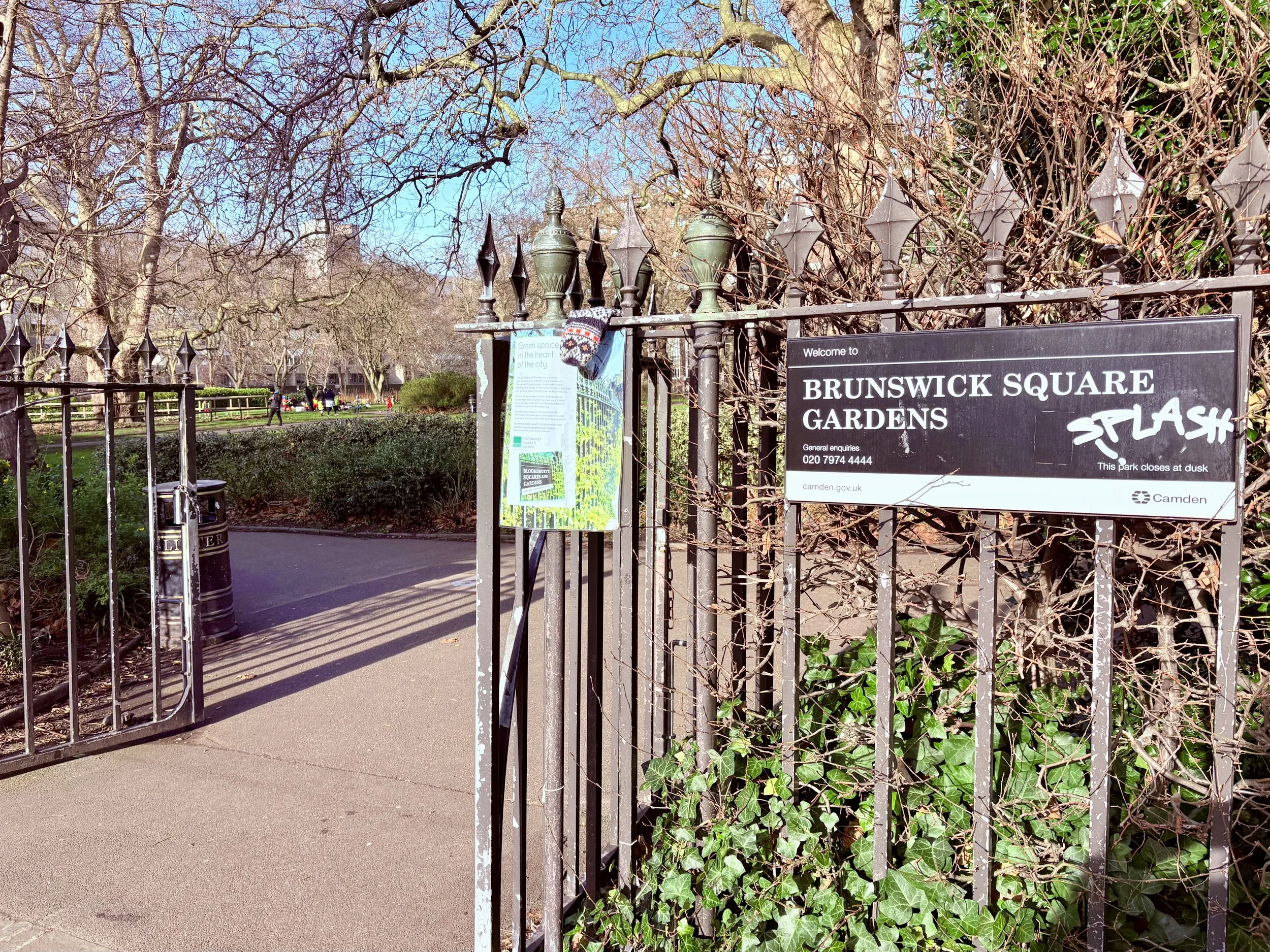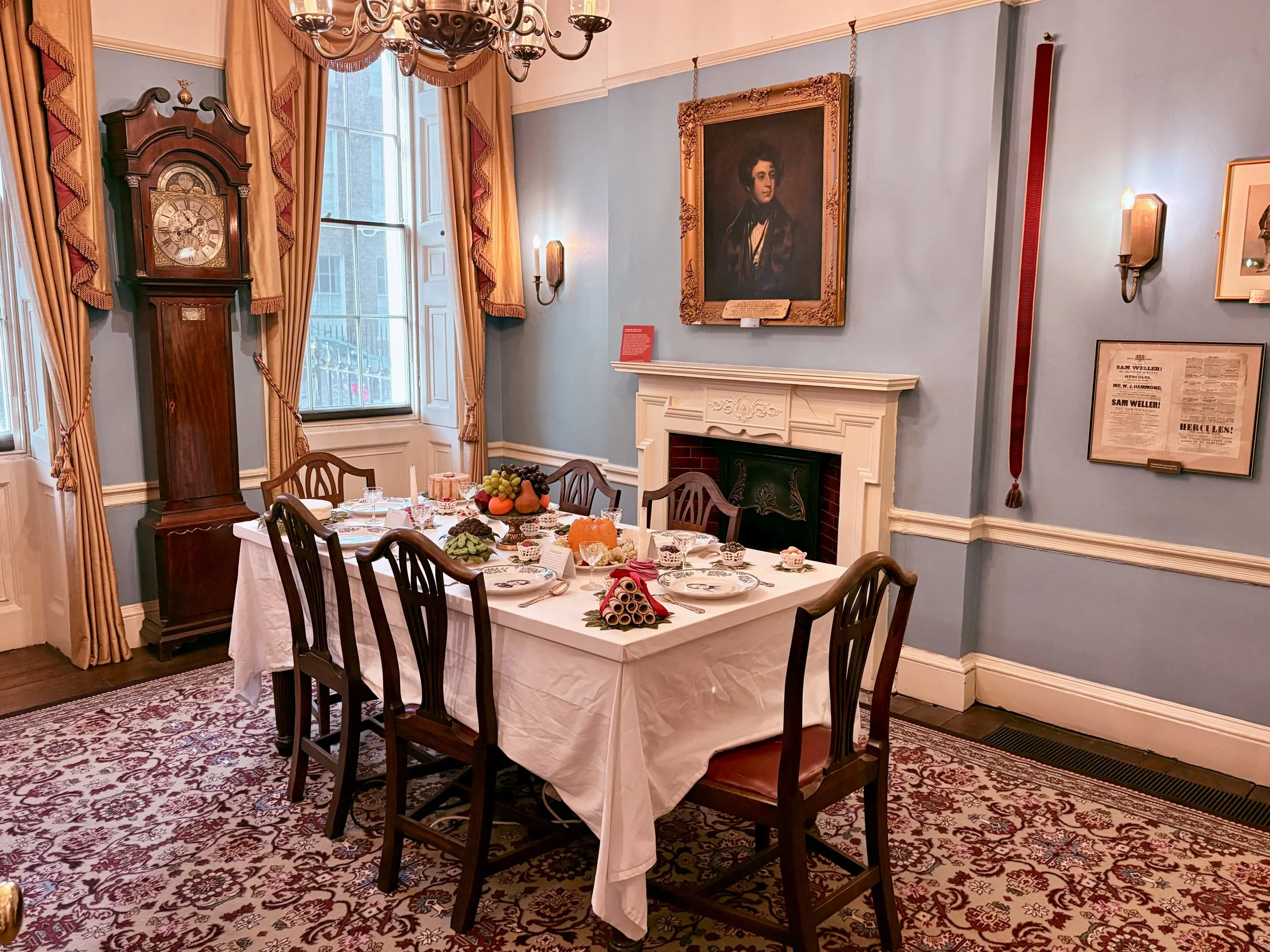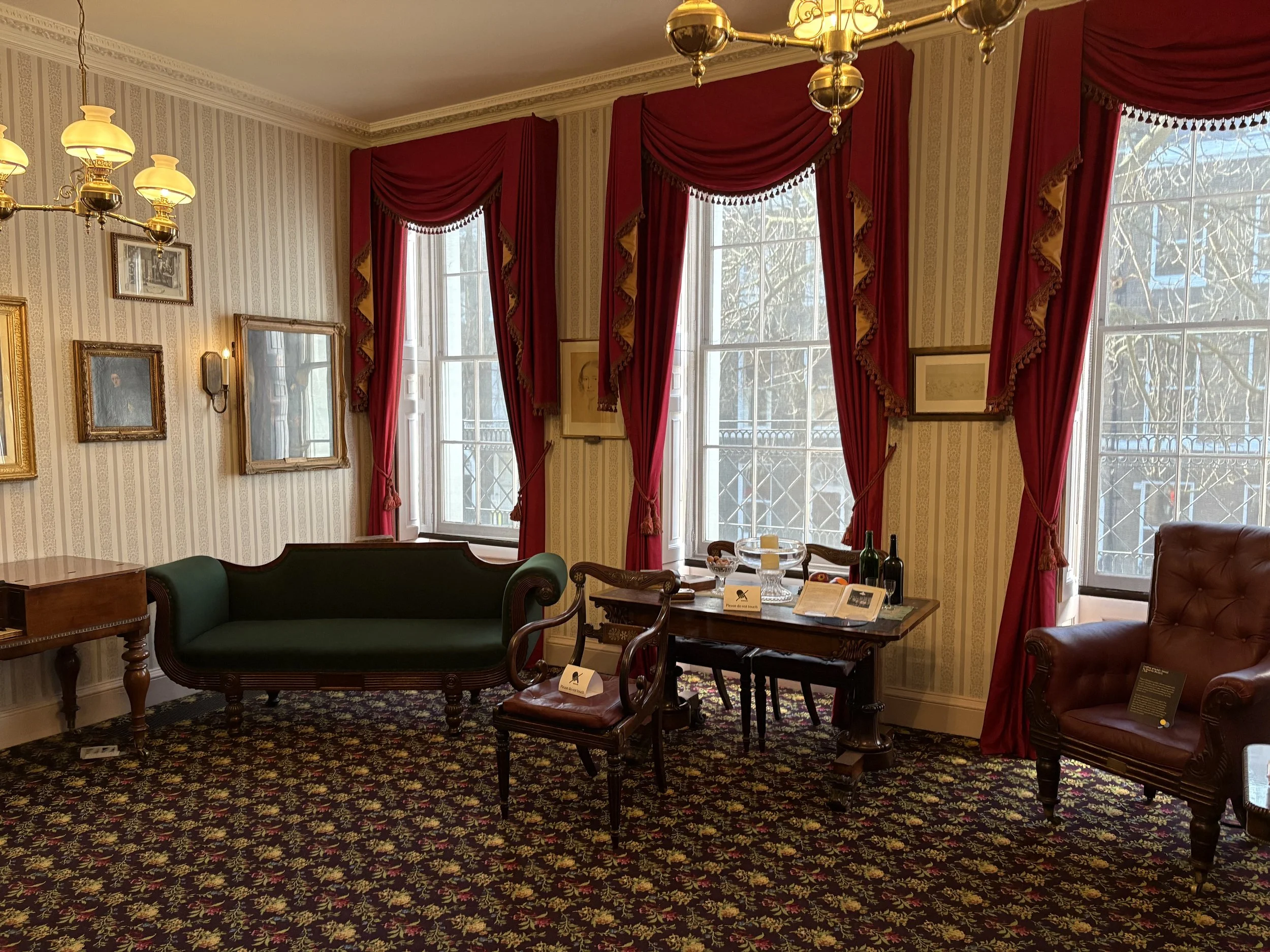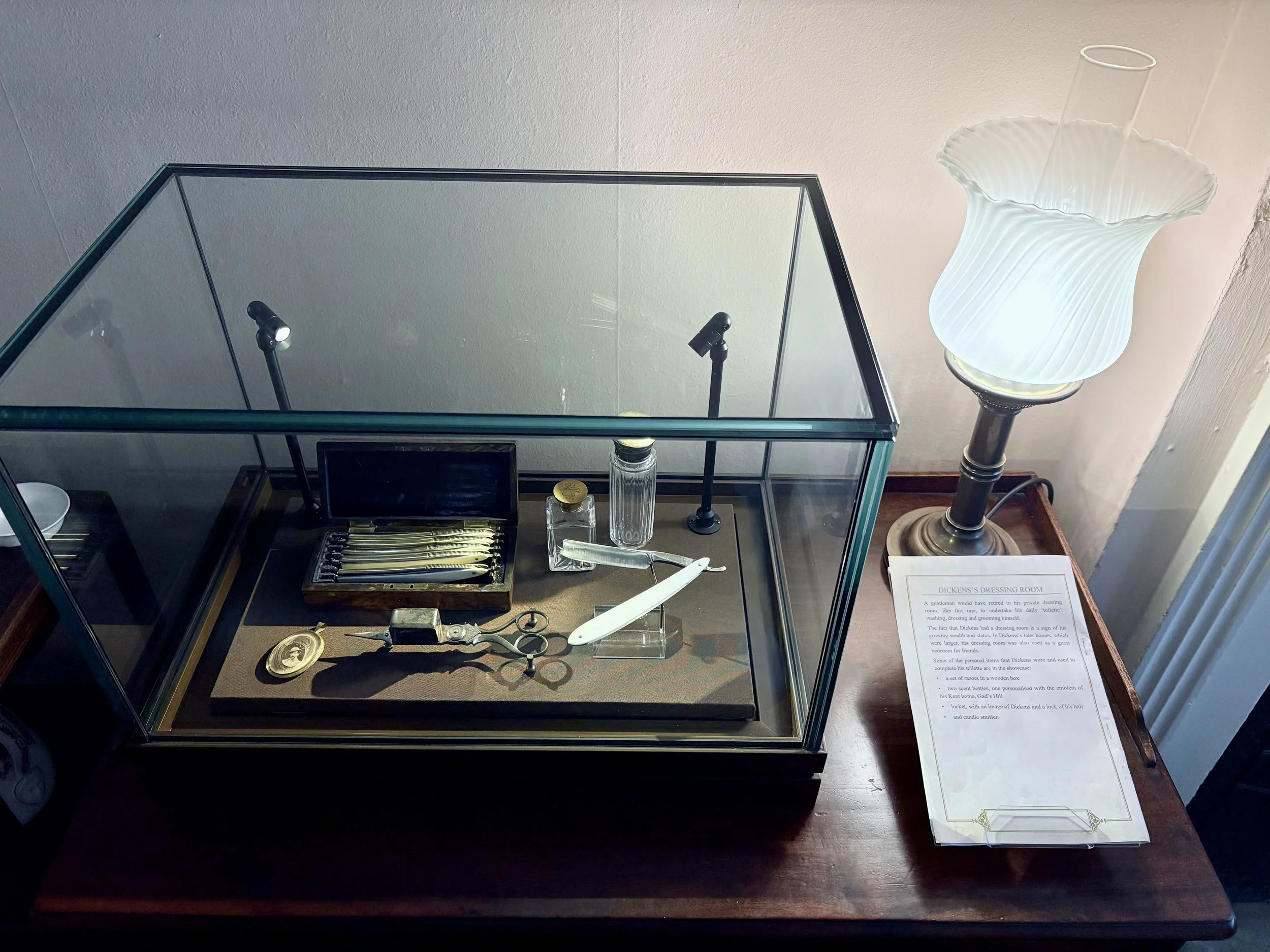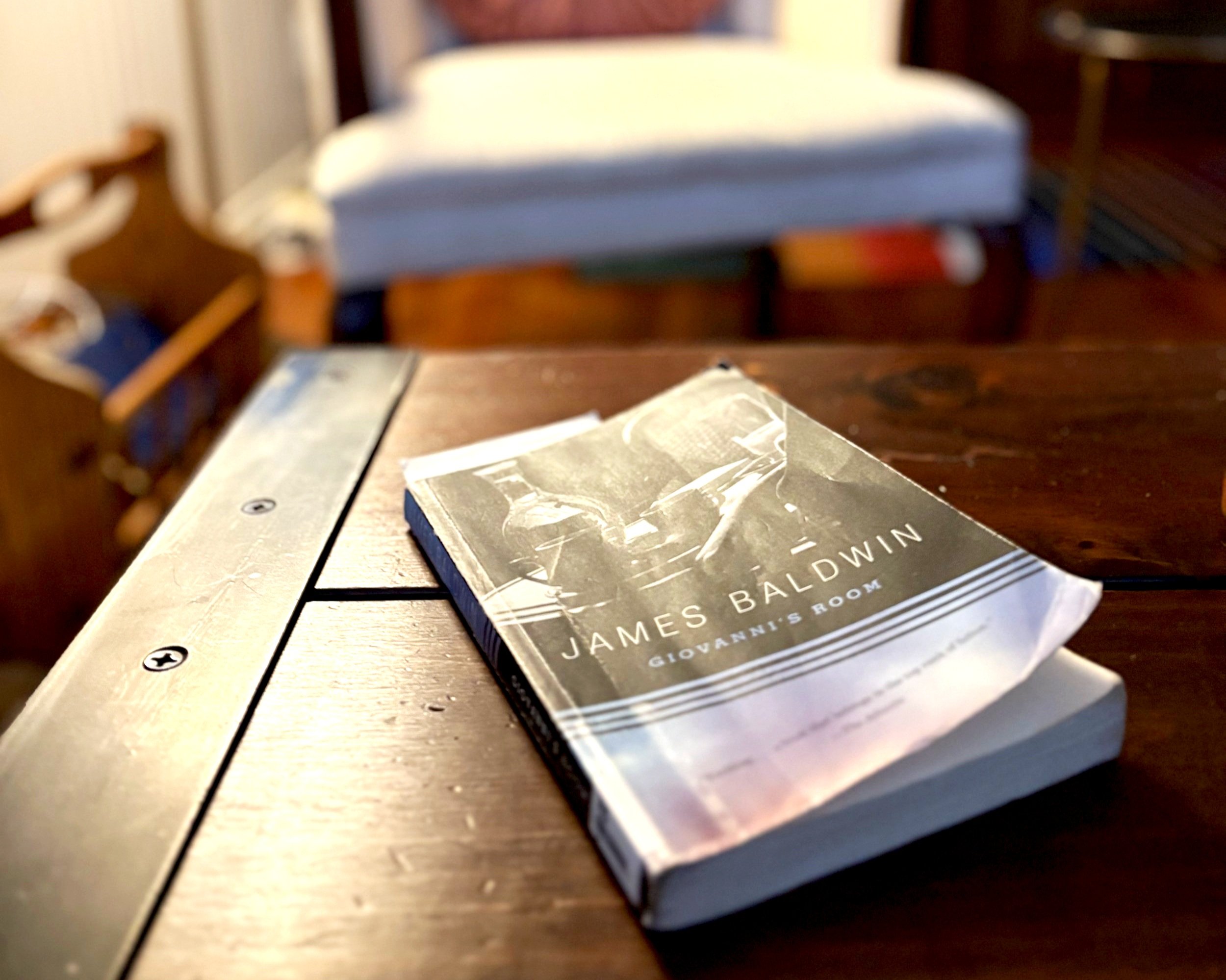Books and Boroughs: A Beginner's Guide to Getting Lost in London
Reader Advisory: One photo in this post contains a realistic historical prop that may be unsettling to some viewers.
The golden hour stretched across Interstate 95 as my brother-in-law and I drove south toward Orlando International, Mitch Hedberg's comedy filling much of the two-hour journey. I was leaving the country amid a wave of changes, taking off for a month across Europe at the end of winter, hoping to catch the first few glimpses of spring there in February. My only previous European experience had been a trip to Ukraine nearly a decade earlier in 2016 during grad school, visiting Kyiv, Lviv, and Vinnytsia with my then-girlfriend. This time would be different - I'd be traveling alone.
I arrived at the airport hours early to find no lines at security. The overnight flight brought its own challenges - restless sleep interrupted by flight attendants' movements and a meal I couldn't bring myself to turn down despite wanting to rest. I'd regrettably passed on buying a quality neck pillow at the Orlando airport; by the time I decided the $70 investment might be worth it, the shops had closed. Since September, I'd been dealing with mysterious back pain that had led to several doctor visits, pain medication, and physical therapy, even forcing me to take a break from the gym for several weeks.
Landing in London brought unexpected sunshine and a familiar chill - thankfully, I'd succeeded in my attempt to resist fully acclimating to Florida weather. The Uber ride from the airport took nearly an hour and a half through slow-moving traffic. Each time we stopped, I experienced an odd sensation - slightly nauseated but not entirely unpleasant. Whether it was the medication, exhaustion, nerves, or some combination, I couldn't quite tell.
The driver dropped me off at what seemed like a random alley. Following my WhatsApp instructions, I found the nondescript door and keypad, entered the code, and retrieved my key from the lockbox in the cramped foyer. My back and I regarded the three steep flights of stairs with nervous dread, but we made it to the top without any flare-ups.
Standing in my small room, I felt the reality of what I was undertaking begin to sink in. Ahead lay nearly a month of travel through Paris, Prague, and Berlin before returning to London and then home. But first, I needed to figure out how to navigate this corner of London that would be my home for the next few days.
Hungry and needing to orient myself in the new neighborhood, I set out to find dinner. The walk led me to Greenland Dock, where the evening light transformed the water into a mirror for the buildings along its edge - modern glass towers and historic brick reflecting in the still water.
I found my way to Surrey Quays Shopping Centre and picked up a Greek platter from one of the food stands outside. Back in my room, despite the travel exhaustion, my body insisted it was still mid-afternoon. I put on Severance, hoping it would help me wind down and adjust to the new time zone. Between the show and the day's travel catching up with me, it worked.
Day 1: Gay’s the Word and the British Library
My first full day in London began with work from the hotel room. By mid-morning, the small space felt too cramped, so I decided to relocate to Gay's the Word - London's oldest LGBTQ+ bookshop, established in 1979. Despite being raided by customs officials in 1984 for importing "indecent" materials, the shop has remained a cultural landmark and safe space for over 45 years.
After walking down three flights to the street, I realized I'd forgotten my pain medication and headed back up the stairs to get it. Already tired and a bit flustered after climbing back up for the meds, I attempted my first London bus journey. It didn't go well. I tried to board through the exit doors. The woman at the stop offered no help, and the driver quickly lost patience, pulling away while I was still figuring it out. After looking up the proper procedure online, I tried again, this time successfully making it to the top deck for a proper view of the city.
The bookshop was small but welcoming. I picked up some postcards - cheap, easy to transport, and perfect for decorating - along with one of their bright pink tote bags and a pan flag pin. The bookseller and I had a brief conversation about censorship and living in Florida before he directed me to The Observatory, a photography-themed café around the corner.
The café staff welcomed me to work there, but I soon realized I'd left my charger behind. I worked until my battery died and then decided that, rather than lug around my converter power strip and bulky charger in my daypack, I would buy a local charger for my time in London. When that search proved unsuccessful, I made my way to the British Library instead.
The library's exterior was architecturally underwhelming, but stepping inside revealed the stunning King's Library - a multi-story glass pillar showcasing centuries of collected knowledge. During a video call with coworkers from my phone, I couldn't resist showing off my impressive backdrop. I mentioned that the Magna Carta was in the next room, and when my coworker asked if it was “just sitting out,” I couldn't help myself: “Oh yeah, I signed it. Put my John Hancock on it. And then signed it as John Hancock. Love, America.” She suggested I take a proper “stupid American selfie” with it. I tried, contorting myself for the right angle and making increasingly ridiculous faces until I noticed some college students enjoying the show. They kindly helped me get the shot.
Beyond my impromptu photo session, the Treasures Exhibition was genuinely impressive. Handwritten manuscripts from Elizabeth Barrett Browning, Jane Austen, Ted Hughes, and Sylvia Plath shared space with the original Spanish Inquisition sketch from Monty Python and the Beatles' draft of "In My Life." The First Folio and even second-century Egyptian homework brought history to life behind glass.
By the time I finally found a charger, my energy was fading. I opted for the tube home instead of staying out - a decision that proved wise. I begrudgingly finished my work for the day and barely managed a shower before collapsing at 8:00 PM without even eating dinner. When I woke at 2:00 AM, hunger had found me again in the darkness.
Day 2: The Globe and 221B Baker St.
The next day I knew I wanted to get out early. The cramped room was going to drive me insane. I was trying to be strategic about food costs - I hadn't heard great things about British cuisine and wanted to save my food budget for my next stop in Paris. The discovery of Pret was a revelation: relatively healthy, affordable options and free WiFi. I immediately earmarked it as my go-to spot for the rest of my London stay. I found a location near London Bridge and headed out for work.
Upon arrival in the neighborhood, I was greeted with a rather unpleasant and anachronistic surprise. A very realistic head on a pike and a man in a tricorn hat greeted me as I came up from the Underground station. The London Bridge Experience's theatrical approach to history felt jarringly exploitative. While I can appreciate the macabre (my undergraduate interests included Lars von Trier and Baudelaire), starting the morning with such grotesque displays felt excessive.
Nonetheless, I shook off the shock, found myself a salad at the Pret, and settled into work. After a few hours of writing blog posts and managing projects and one work meeting in which both sides had technological difficulties, it was time to wander over to The Globe. I walked through Borough Market, which reminded me of Pike Place in Seattle. My phone mistakenly directed me to a bar called The Globe instead of the theater. I got my bearings, but by the time I arrived, I realized I wouldn't have time for both the Shakespeare's Globe tour and my pre-booked time at the Sherlock Holmes Museum, about 45 minutes away.
Walking along the Thames toward the station, I followed cobblestone streets under overpasses and through alleys, catching whiffs of something savory and woody. In one tunnel, I heard “Here Comes The Sun” floating around the curve. At first, I thought it was a recording, but the voice wasn't Harrison's and the accompaniment was too minimal. Rounding the bend, I found a young man in his early twenties playing an impressive rendition. Watching his fingers move across the strings, I wondered if I could still play like that - if I ever could. Just over a decade ago, I'd taken my own musical journey, a 48-day tour across 40 states playing dive bars.
At 221B Baker Street, I'd done my research and pre-booked luggage storage at a souvenir shop down the street. The museum prohibits bags inside to protect its Victorian antiques and fixtures in the tight space. The staff seemed to appreciate that I knew the procedure. What I thought would be a few pounds turned out to be over £20 (~24 USD) with added fees for an hour of storage. Disappointing, but I reminded myself this was a once-in-a-lifetime visit. From past experience, I knew I'd regret choosing savings over experience.
Being 6'1" and American, I wasn't built for the narrow Victorian spaces of 221B Baker Street. The tour guide on the main floor stumbled over a few lines, but his earnestness made up for it. I appreciated how Holmes had arranged his consultation room with his back to the window, using the natural light to study his visitors while remaining mysteriously silhouetted himself.
The sitting room and bedroom felt cramped but atmospheric, with their warm colors and dim lighting. The overcast day outside added authenticity, the weak natural light barely penetrating the small windows. Despite reading the stories during a particularly distracted period of my life, I was surprised by how much of the tour information I already knew. I didn't take many photos, even though they allowed them (no flash or video). I still feel self-conscious about being too touristy, and when I do take pictures, I often take them quickly and badly, usually for reference but rarely referring back to them. I'm trying to care less. Plus, I really wanted to just immerse myself in the experience and enjoy the moment.
I had the "policeman" at the front entrance take my photo walking out in the deerstalker cap. I would have preferred the more historically accurate top hat, but they only had a bowler available, which I think was for Watson. I knew the deerstalker would be more recognizable on social media anyway.
I couldn't resist adding a bit of playful verse to accompany the photo:
The Case of the Peculiar Portrait
At Baker Street, where golden numbers shine,
A visitor stands posed in details fine.
The deerstalker perched proud upon his head,
Though Doyle himself penned no words thus said.
Now solve this case and share what you can see:
Which detective lived here at 221 B?
Having fully embraced the tourist experience thus far, I decided to finish the evening with a stop at The Volunteer pub next door for proper fish and chips. I paired it with a Siren Yulu, described as having Earl Grey notes. The beer proved more nuanced than American attempts at tea-infused brews. The mushy peas that came with my meal were a bit too vibrant green and texturally challenging - I managed about half before giving up. Their earthy, almost cannabis-like flavor was interesting, if not entirely appealing.
On my way to the station, I stopped at Boots pharmacy. The stop proved fruitful - body wash, a washcloth for the dishes, a loofah, and most importantly, a memory foam neck pillow for just £30. Finding a good quality option for less than half the price of my airport option felt like a small victory.
Day 3: Bloomsbury, Charles Dickens Museum, and Museum of Freemasonry
The next morning, I checked out of my room in Surrey Quays and made an online reservation for luggage storage near St. Pancras Station. I took an Uber there, noticing that same excited-sick feeling whenever we stopped. I rarely get motion sick, but between the winding roads and constant stop-and-go traffic, I was starting to wonder if that's what it was. At the hotel café where I'd arranged to store my bag, I treated myself to a proper coffee. After too many days of instant coffee from my room's kitchenette and kettle, I needed it.
The walk to my next destination was just under a mile, pleasant and sunny, around 45 degrees Fahrenheit. I found myself unexpectedly in Virginia Woolf's neighborhood, and suddenly my surroundings took on new meaning. The Bloomsbury Group had been a significant inspiration during my undergraduate years - their alternative lifestyle and independent press resonated with me. The area reminded me of certain New York City neighborhoods with its brownstones, and children played in Brunswick Square Gardens. Though I'm sure the area commands premium prices now, it felt surprisingly peaceful.
The Charles Dickens Museum offered intimate glimpses into Victorian literary life. In his dressing room, an audio guide explained how the press often criticized his style choices in both the UK and USA, though working-class people seemed to appreciate his flair. His only surviving suit stood on display, challenging my preconceptions of the author as merely a somber social critic.
The dining room, with its carefully set table, grandfather clock, and portrait watching over empty chairs, evoked the energy of his legendary dinner parties. His writing desk spoke to a different kind of precision - its meticulous organization and collection of implements, now preserved under glass, suggested the discipline underlying his intricate narrative style.
I ended my visit in the Artful Tea Room, where I took my next round of pain medication. My back had been surprisingly cooperative despite days of walking with a backpack, though I could feel the strain creeping back between doses. As I rested, I overheard a man reading aloud from his phone about Dickens' behavior during his divorce - how he had publicly maligned his wife as an unfit mother and questioned her sanity. "What a shit," the man announced to his visibly disinterested wife, seemingly unaware of the irony hanging in the air between them.
With time to kill after the Dickens Museum, I searched for nearby attractions on my phone and discovered London's Museum Mile. After so many literary stops, I was ready for something different. The Masonic Museum caught my attention - I'd always been curious about this secretive organization. Despite my back's protests - the backpack feeling heavier than usual with my travel day additions - I plugged the location into Google Maps and set out.
The museum housed an impressive collection of regalia and tracing boards, their imagery reminiscent of Dalí's surrealism. Symbols were painted into enigmatic scenes without explanation, maintaining their mystery even in display. One room opened into a dramatic space of ascending power - thrones at ground level, more thrones overlooking from a balcony, and in the center, a grand throne on an ornate rug, cordoned off by a red rope.
In a quiet nook of the library, a reading chair beckoned. A table nearby displayed carefully arranged books about Freemasonry, positioned as if to offer answers to curious visitors like myself. As much as I wanted to rest my back, I was also genuinely interested in what I might learn. I picked up "Freemasonry for Dummies," which somewhat deflated the mystery. The book portrayed their "secrets" as comparable to corporate trade secrets and presented the organization as essentially a pantheistic charitable group where members could worship their god of choice.
Part of me wanted to keep digging for deeper answers, but my back had other ideas. Even the comfortable library chair wasn't going to provide the relief I needed - it was time to collect my suitcase and find somewhere to take my medication.
At Kabanas to collect my luggage, I encountered a different kind of London experience. A relatively short, fit man about my age, dressed in expensive casual wear, was struggling with the door when I arrived. I pressed the button to enter, and he followed and few secons behind and then cut in front of me at the front desk. His booking apparently hadn't included some expected service, and he made sure everyone seated in the cafe knew his displeasure: “It will be reflected in my review.” The performance was doubly irritating - first for the line-cutting, then for holding everyone up while berating the desk clerk who was simply doing her job. In my experience, such situations (if his complaint was even legitimate) are better handled with empathy. I've gotten far more complimentary upgrades and solutions through kindness than threats. Her colleague mercifully came to help me with my bag, though I left wishing I'd found the right words to support the clerk on my way out. Instead, I walked to St. Pancras station trying to let go of the irritation.
The station's Victorian Gothic architecture felt like a fitting end to my London literary pilgrimage. As I waited for my train to Paris, I found myself already processing the past few days - from private writing rooms to public houses, from the spaces where stories were created to the places where they're still being told.
